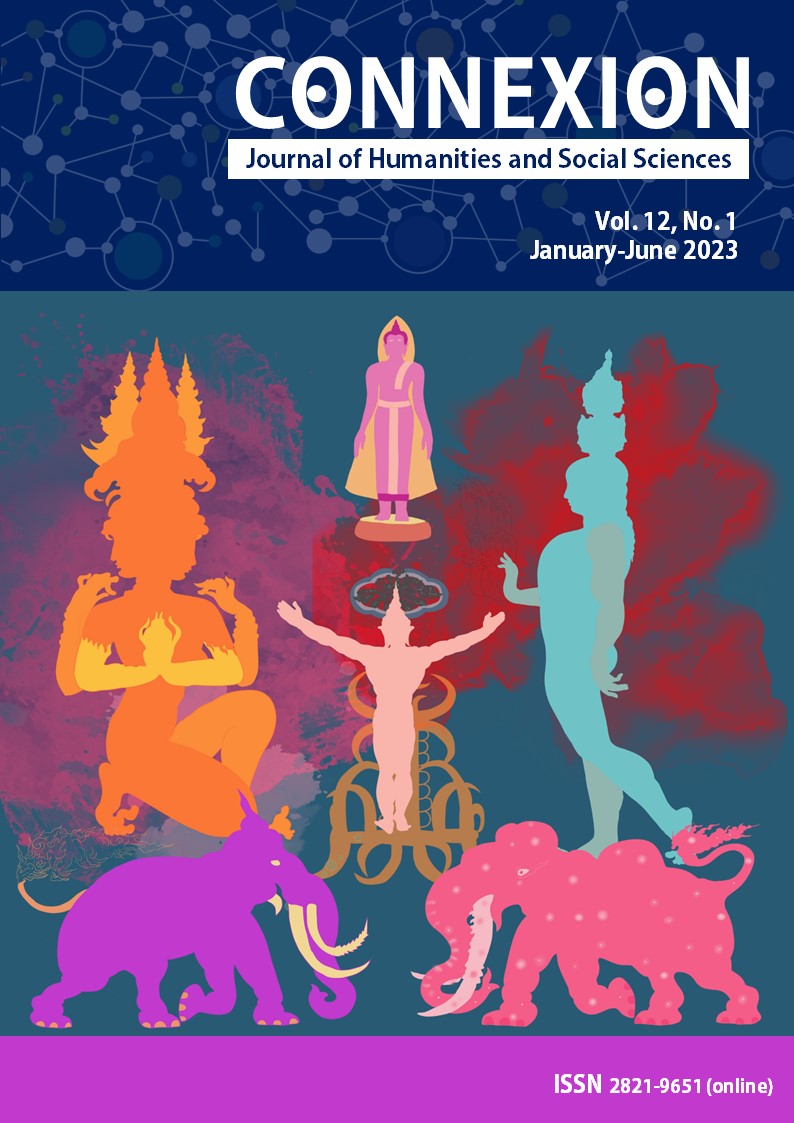ใฝ่หาอุมมะฮ์: จากมุสลิมยุคระเบียบใหม่สู่มุสลิมแห่งยุคปฏิรูปในนวนิยายอิสลามอินโดนีเซีย ค.ศ. 1998-2004
Main Article Content
บทคัดย่อ
บทความวิจัยนี้ต้องการศึกษาพจนารมณ์หรือการแสดงความรู้สึกของชาวมุสลิมอินโดนีเซียหลังยุคระเบียบใหม่ผ่านนวนิยายอิสลามอินโดนีเซียเรื่อง Perempuan Berkalung Sorban และ Ayat-Ayat Cinta ที่ออกมาระหว่างใน ค.ศ. 1998-2004 เพื่อจะแสดงให้เห็นถึงความเปลี่ยนแปลงทางประวัติศาสตร์ของความรู้สึกของชาวมุสลิมอินโดนีเซียโดยใช้วิธีการศึกษาทางประวัติศาสตร์และกรอบคิดเรื่องพจนารมณ์ (Emotive) ของวิลเลียม เรดดี้ (William Reddy) ทั้งนี้จากการศึกษา พบว่านวนิยายอิสลามอินโดนีเซียได้เผยให้เห็นถึงพจนารมณ์และแนวคิดว่าด้วยการเป็นอุมมะฮ์มุสลิมอินโดนีเซีย (ชุมชนมุสลิม) แบบใหม่อันวางอยู่บนความเท่าเทียมทางเพศและศีลธรรมแบบอิสลาม อันแตกต่างจากยุคระเบียบใหม่ที่ให้อำนาจและบทบาทของผู้ชายเหนือสตรีเพศ
Article Details

อนุญาตภายใต้เงื่อนไข Creative Commons Attribution-NonCommercial-NoDerivatives 4.0 International License.
Copyright
Connexion: Journal of Humanities and Social Sciences has an exclusive right to publish the accepted articles in any form. However, the author retains the following rights:
1. The right to the ownership of the article;
2. The right to use all or part of the article in his/her other works;
3. The right to re-produce the article for personal use or for use in the author’s organisation, in which case the author must obtain permission from Connexion: Journal of Humanities and Social Sciences;
4. The right to make copies of all or part of the work for educational use or for the author’s use in classroom teaching; and
5. The right to include the work (both the preprinted and printed versions) in an institutional repository.
เอกสารอ้างอิง
Arimbi, D. A. (2009) Reading contemporary Indonesian Muslim women writers: Representation, identity, and religion of Muslim women in Indonesian fiction, Amsterdam: Amsterdam University Press.
Arnez, M. (2009) Dakwah by the pen: Reading Helvy Tiana Rosa’s Bukavu, Indonesia and the Malay World, vol. 37, no. 107, pp. 45-64.
Arnez, M., & Dewojati, C. (2010) Sexuality, morality and the female role: Observations on recent Indonesian women’s literature, Asiatische Studien/Études Asiatiques, vol. 64, no. 1, pp. 7-38. https://doi.org/10.5167/uzh-35186
Aspinall, E. (2010) ‘Semi-opponents in power: The Abdurrahman Wahid and Megawati Soekarnoputri presidencies’, in E. Aspinal & G. fealy (eds.), Soeharto’s new order and its legacy essays in honour of Harold Crouch, pp. 119-134, Canberra, Australia: ANU E Press.
Aveling, H. (2007) Indonesian literature after Reformasi: The tongues of women, Kritika Kultura, vol. 8, pp. 5-34.
Booth, A. (1998) The Indonesian economy in the nineteenth and twentieth centuries; A history of missed opportunities, London: Macmillan.
Bourchier, D., & Hadiz, V. R. (eds.). (2003) Indonesian politics and society: A reader, London: Routledge.
Curnow, H. M. (2007) Women on the margins: An alternative to KODRAT?, Doctoral dissertation, University of Tasmania.
Danerek, S. (2006) Tjerita dan novel: Literary discourse in post new order Indonesia, Doctoral dissertation, University of Lund.
Dick, H., Houben, V. J. H., Lindblad, J. T., & Wie, T. K. (2002) The emergence of a national economy: An economic history of Indonesia, 1800-2000, Crows Nest NSW, Australia: Allen & Unwin.
El Khalieqy, A. (2009) Woman with a Turban (Perempuan berkalung sorban), Yogyakarta: Arti Bumi Intaran. (in Indonesian)
El Shirazy, H. (2005) Verses of love (Ayat-ayat cinta), Indonesia: Penerbit Republika. (in Indonesian)
Hatley, B. (1999) New directions in Indonesian women’s writing? The novel Saman, Asian Studies Review, vol. 23, no. 4, pp. 449-460. https://doi.org/10.1080/10357829908713250
Hefner, R. W. (1998) ‘Market and justice for Muslim Indonesians’, in R. W. Hefner (ed.), Market cultures: Society and morality in the New Asian Capitalisms, pp. 224-256, Colorado: Westview Press.
Hefner, R. W. (2000) Civil Islam: Muslims and democratization in Indonesia, Princeton, NJ: Princeton University Press.
Hellwig, T. (2011) Women writing about marriage and sexuality: Post-1998 Indonesian fiction, Singapore: Asia Research Institute, National University of Singapore.
Marching, S. T. (2007) The representation of the female body in two contemporary Indonesian novels: Ayu Utami’s Saman and Fira Basuki's Jendela-jendela, Indonesia and the Malay World, vol. 35, no. 102, pp. 231-245. https://doi.org/10.1080/13639810701440699
McGlynn, J. H. (2000) Silenced voices, muted expressions: Indonesian literature today, Manoa, vol. 12, no. 1, pp. 38-44.
Muzakki, Akh. (2017) Transmitting Islam through stories: The sociology of production and consumption of Islam in novel literature, Journal of Indonesian Islam, vol. 11, no. 1, pp. 59-76. https://doi.org/10.15642/JIIS.2017.11.1.59-76
Nor Ismah. (2011) The new generation of women writers from the Pesantren tradition in Indonesia, Explorations: A Graduate Student Journal of Southeast Asian Studies, vol. 11, no. 16, pp. 105-120.
Nur Wulan. (2013) Does phallic masculinity still matter? Masculinities in Indonesian Teenlit during the post-reformasi period (1998-2007), The Journal of Men’s Studies, vol. 21, no. 2, pp. 149-161. https://doi.org/10.3149/jms.2102
Puaksom, D. (2012) A history of Indonesia: Pre-modern archipelagic states, colonial modernity, and the republic of diversity (ประวัติศาสตร์อินโดนีเซีย : รัฐจารีตบนหมู่เกาะ ความเป็นสมัยใหม่แบบอาณานิคมและสาธารณรัฐแห่งความหลากหลาย), 2nd edition, Bangkok: Muang Boran. (in Thai)
Reddy, W. M. (2001) The navigation of feelings: A framework for the history of emotions, New York: Cambridge University Press.
Ricklefs, M. C. (2008) A history of modern Indonesia since c. 1200, 4th edition, Basingstoke: Palgrave Macmillan.
Ricklefs, M. C. (2012) Islamisation and its opponents in Java: A political, social, cultural and religious history, c. 1930 to present, Singapore: NUS Press.
Sangrat, A. (2012) Forbidden desire: Sex and love in Fragrant Literature by Indonesian contemporary women authors (อารมณ์ต้องห้าม: เพศ และความรักในวรรณกรรมรัฐจวนของนักเขียนสตรีอินโดนีเซียร่วมสมัย), Master’s thesis, Walailak University. (in Thai)
Sears, L. J. (2007) Reading Ayu Utami: Notes toward a study of trauma and the archive in Indonesia, Indonesia, vol. 83, pp. 17-39.
Shiraishi, S. S. (1997) Young heroes: The Indonesian family in politics, Ithaca, NY: Cornell University, Southeast Asia Program.
Suryakusuma, J. I. (1996) ‘The state and sexuality in new order Indonesia’, in L. J. Sears (ed.), Fantasizing the feminine in Indonesia, pp. 92-119, Durham, NC: Duke University Press.
Van Doorn-Harder, N. (2002) The Indonesian Islamic debate on a woman president, Sojourn, vol. 17, no. 2, pp. 164-190.
Vatikiotis, M. R. J. (1998) Indonesian politics under Suharto: The rise and fall of the New Order, 3rd edition, London: Routledge.


